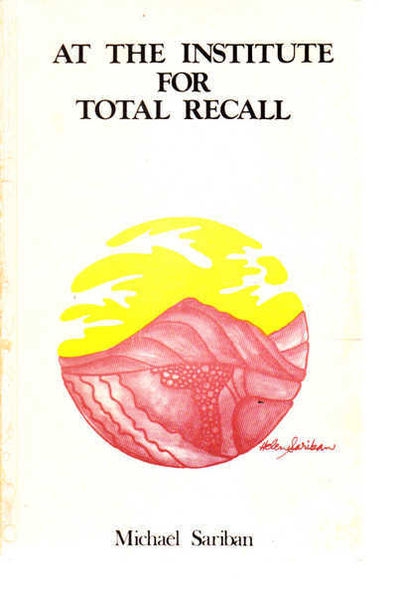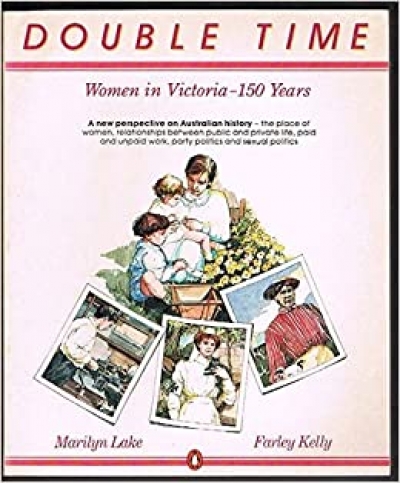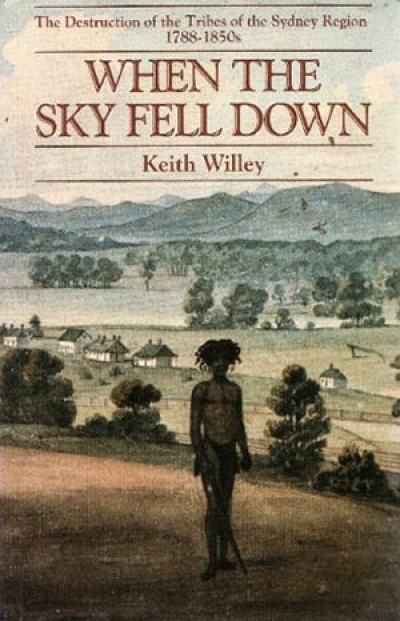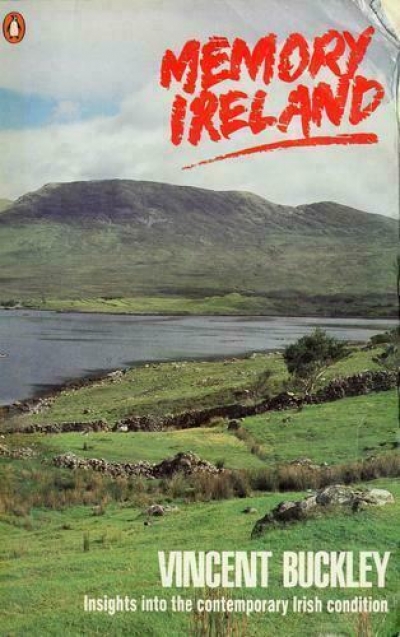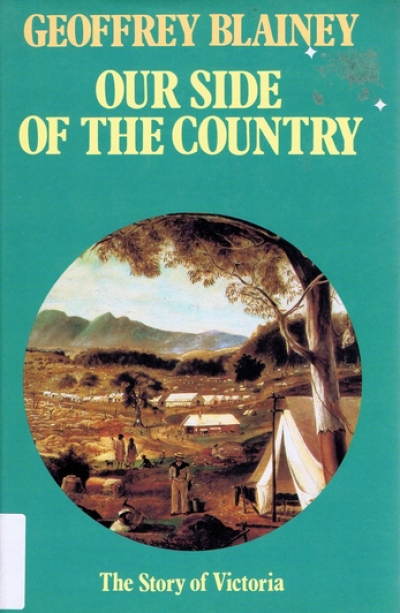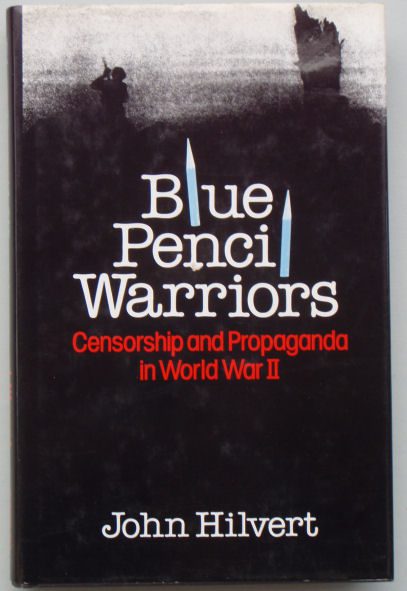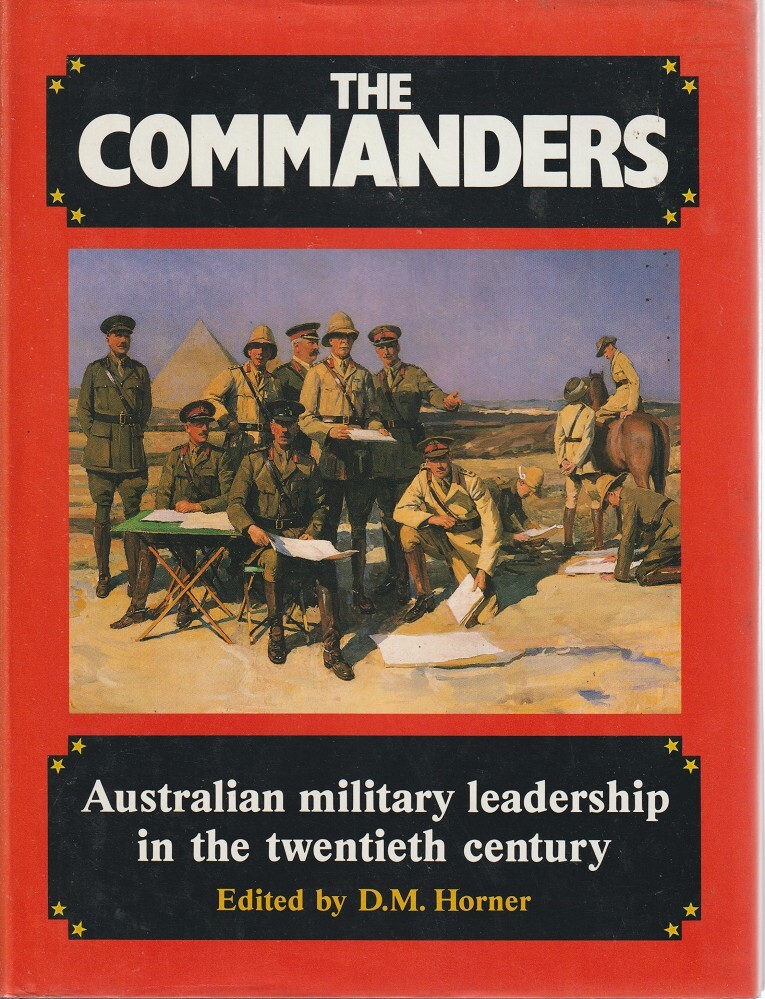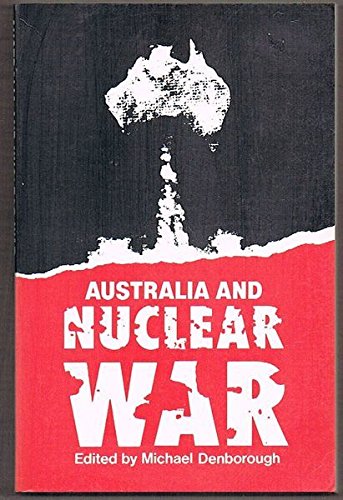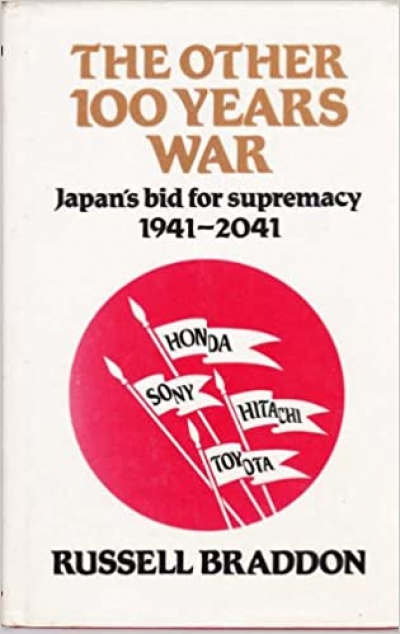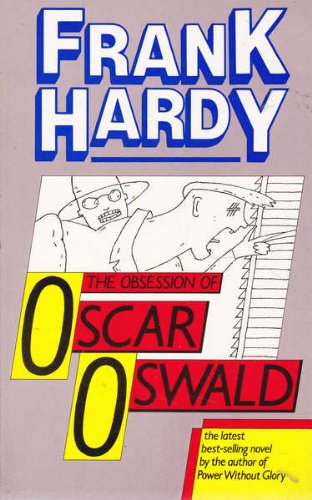History
Outbreak of Peace by Wendy Poussard & At the Institute for Total Recall by Michael Sariban
Poussard’s Outbreak of Peace (Billabong Press, $3.95 pb, 44 pp) is a personal record of the women’s action at Pine Gap in November 1983. It is difficult to say precisely how Poussard achieves the fine balance of political and personal commentary that she does, but her introduction provides a clue. ‘Australians are an urban, shore-hugging people,’ she writes, ‘but in the middle of our urban, shore-hugging consciousness there is a space, a desert. For a people with few myths, the openness and vastness of the Centre holds a hint of liberation.’
... (read more)Double Time: Women in Victoria – 150 Years edited by Marilyn Lake and Farley Kelly
The first idea I remember having about the past as history was that people were more brutish then and more unjust because they were more ignorant. History was progress. This was the enlightened age.
... (read more)When the Sky Fell Down: The destruction of the tribes of the Sydney region 1788–1850s by Keith Willey
Keith Willey died on 6 September 1984. He had just submitted the manuscript of what was to be his last book. A study of Australian humour in adversity titled You Might As Well Laugh Mate, it summed up the man, not least in his last days. Sardonic, self-effacing, unashamedly Australian.
... (read more)Memory Ireland: Insights into the contemporary Irish condition by Vincent Buckley
It is often the case that a well-informed outsider can light on structures, habits of thought and patterns of behaviour which, to the people living them out, are neither perceived nor understood.
Vincent Buckley, who describes himself as a ‘loving outsider’, has visited Ireland on numerous occasions and lived there for long periods over almost thirty years. If he is an outsider, he is certainly a well-informed one, and no-one reading this book – subtitled ‘Insights into the contemporary Irish condition’ – can doubt that it is a book of love and, by that means, penetration.
... (read more)Somebody recently told me that Geoffrey Blainey wrote much of the text of this history of Victoria while travelling in aircraft. If true, Blainey has an enviable knack of finding seats with elbow room, but otherwise there’s no reason to complain. Sir Charles Oman, the great military historian of the Napoleonic wars, was said to have drafted one book during a summer spent waiting for connecting trains at French railway stations. Those fortunate enough to possess a lot of intellectual capital should make the most of it. In the central four chapters of social history, perhaps the most satisfactory part of this book, Blainey cites his evidence as ‘the accumulation of years of casual reading of old newspapers, looking at historic sites and talking with old people’. Disarmingly, he adds: ‘Most of the explanations of why change came are probably my own’.
... (read more)Secrecy in human affairs seems to me as useful in grappling with problems as flat-earth dogma is in navigation. I have the belief that the most dazzlingly effective stroke the U.S. Pentagon could make toward dissipating nuclear nightmare would be to throw open the whole spectrum of its weapons experimentation and innovation to anyone who wanted to walk in and look it over. My further belief is that the sheer weight, variety and thrust of all that would be revealed would be such a horizon-expander to, say, Soviet scientists that those scientists would be too caught up in the sheer challenges to the understanding of it all to constrict themselves into any scramble to winnow out immediate military advantage – and indeed that the very process of assimilation of and adaptation to the revealed data would very likely have so many sorts of extraordinary and mutually beneficial (that is, both to the U.S. and the non-U.S. world) effects that the very reasons for nuclear confrontation would vanish from sheer irrelevance and inanity.
... (read more)The Commanders edited by D. M. Horner & War Without Glory by J. D. Balfe
These books have little in common though they are both concerned with men at war. Balfe’s book is chatty, idiosyncratic, episodic and without any academic intent. Often using the words of three pilots involved, he tells the story of the futile and costly air fighting which followed the highly successful Japanese attacks against Malaya, Sumatra and the Netherlands East Indies. Australian aircrew were forced to fight the Japanese with Hudsons and Buffaloes. Given that the enemy had overwhelming superiority in numbers; that the Buffalo was one of the worst fighters produced, and that the Hudson was no match for virtually any Japanese aircraft, the Australian squadrons after the initial contacts were almost completely destroyed. The causes of this disaster and the eventual outcome of it are well known.
... (read more)Anyone still worried about the military-industrial complex unveiled by Eisenhower at the end of his presidency can have their Angst updated with this disturbing book.
The present Republican commander-in-chief, with only the tinsel medals of Hollywood for his proud chest and a set role to play, is unlikely, even as a parting gesture, to use up prime time to let us in on how the robust infant of Eisenhower’s day has come of age and mutated with the times to become the fully-integrated military-industrial-academic-bureaucratic complex it is today.
Frank Barnaby, professor of peace studies at the Free University of Amsterdam and former head of the Swedish peace research centre, SIPRI, in the opening paper in this collection, ‘Will There Be A Nuclear War?, shows how powerful and well-entrenched this complex has become. Vast bureaucracies have grown up in the great powers to deal with military matters, and about 500,000 scientists, around 25 per cent of all scientists employed on research, work exclusively on military research.
... (read more)The Japanese tactics in today’s export war are identical with those they employed so successfully in 1941–42 against a bigger army than theirs in Malaya: they attack individual units ‘with surprise and with our strength concentrated’. This is one of the two leitmotifs of Russell Braddon’s book. The other is his notion of Japan’s ‘hundred years’ war’. During his years of captivity in Changi between 1942 and 1945, Braddon was told once by a Japanese officer: ‘This war will last a hundred years, Mr Braddon. I’m afraid you will never go home.’ Later, after the Japanese surrender in August 1945, when he was about to leave Changi, he passed a Japanese officer who was being escorted into the gaol. ‘In a spirit half of elation and half of spite I turned and shouted, “This war last one hundred years?” “Ninety-six years to go”, he called back; and neither of us bothered to bow.’
... (read more)In Carlton the graffiti’s already been around for months: ‘Oscar Oswald is right ... 1984’. Now even if you’ve never heard of Oscar Oswald you’ll know one thing about him and that is that he's not George Orwell ‘If Oscar Oswald is right in 1984,’ the graffiti might easily be saying, ‘then George Orwell must have had it all terribly wrong in 1949’.
... (read more)

